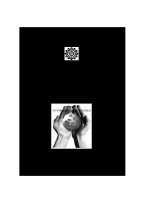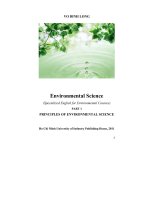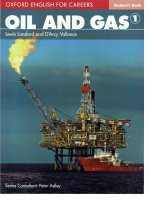English for phisic
Bạn đang xem bản rút gọn của tài liệu. Xem và tải ngay bản đầy đủ của tài liệu tại đây (850.84 KB, 36 trang )
<span class='text_page_counter'>(1)</span>Unit 3:. PRACTICE & HOMEWORK EXERCISES Group 4.
<span class='text_page_counter'>(2)</span> PRACTICE AND HOMEWORK EXERCISES. UNDERSTADING THE READING. WORKING WITH THE VOCABULARY. FURTHER WORD.
<span class='text_page_counter'>(3)</span> UNDERSTADING THE READING Answer the following questions by referring to the reading passage.. 1. What is the internal energy of a system? A body of matter can be viewed as a system of atoms, and each system has a typical amount of energy known the “internal energy” of that system. 2. How is the heat transfer? We should recall the basic principle that heat can only be transferred via a specific environment of matter..
<span class='text_page_counter'>(4)</span> UNDERSTADING THE READING Answer the following questions by referring to the reading passage.. 3.Present the caloric theory of heat? Heat is thus the amount of internal energy flowing from a body at a higher temperature to a body at a lower one, raising the temperature of the latter and lowering that of the former substance, provided that the volumes of the bodies remain constant.. 4. How many different temperature scales are used to measure temperature? What are they?. There are 5 different temperature scales: the Celsius or Centigrade scale; the Fahrenheit scale; the Kelvin scale; the Rankine scale; and the international thermodynamic temperature scale.. ..
<span class='text_page_counter'>(5)</span> UNDERSTADING THE READING Answer the following questions by referring to the reading passage.. 5. Define the triple point of pure water? The boiling point of pure water is 100^o C and freezing point is 0^o C... 6.How many ways does heat transfer? What are they? There are three ways heat transfer. They are conduction, convention and radiation.. ..
<span class='text_page_counter'>(6)</span> UNDERSTADING THE READING Answer the following questions by referring to the reading passage.. 7. What is the main difference between radiation and other? The main difference between radiation and other is the process of transferring heat energy through space by means of electromagnetic wave. Electromagnetic wave carry energy and can travel through a vacuum..
<span class='text_page_counter'>(7)</span> UNDERSTADING THE READING Decide whether each of the following statements is true (T), false (F) or with no information to clarify (N) Then make the necessary changes so that the false statements become true. T. F. N 1. According to the Kinetic Theory of Matter, matter is composed of a large number of atoms or molecules. 2. A body of matter can be viewed as a system of atoms, and each system has a typical amount of energy known the “kinetic energy” of that system. 3. Heat is thus the amount of internal energy flowing from a body at a higher temperature to a body at a lower one, raising the temperature of the former and lowering that of the latter substance..
<span class='text_page_counter'>(8)</span> UNDERSTADING THE READING Decide whether each of the following statements is true (T), false (F) or with no information to clarify (N) Then make the necessary changes so that the false statements become true. T. F. N 4. Heat does not flow from a lower to a higher temperature environment unless another form of energy or work is also presented. 5. The internal energy in matter is all of chemical energy, gravitational, nuclear, and energy associated with the presence of mass itself. 6. The inner core of the Earth generates heat energy due to the radioactive decay..
<span class='text_page_counter'>(9)</span> UNDERSTADING THE READING Decide whether each of the following statements is true (T), false (F) or with no information to clarify (N) Then make the necessary changes so that the false statements become true. T. F. N 7. Heat, under some conditions, may be added or removed from a substance without changing temperature of the substance. 8. Heat energy will produce a measurable change in temperature when enough energy is absorbed by matter to cause a significant increase in the average potential energy of its molecules. 9. Heat is an energy stored in the matter..
<span class='text_page_counter'>(10)</span> UNDERSTADING THE READING Decide whether each of the following statements is true (T), false (F) or with no information to clarify (N) Then make the necessary changes so that the false statements become true. T. F. N 10. The electrons in a piece of metal can leave their atoms and move inside the metal body as free electrons..
<span class='text_page_counter'>(11)</span> UNDERSTADING THE READING Word form Please transfer to past or past participle the following verbs. infinitive. past. past participle. bring. brought. brought. give. gave. given. determine. determined. determined. transfer. transferred. transferred. know. knew. known.
<span class='text_page_counter'>(12)</span> UNDERSTADING THE READING Word form Please choose the best word to complete each sentence.. a. Heat can only be _________ transferred via a specific environment of matter. b. The sum of the total kinetic and potential energies of all the known atoms or molecules in the system is __________ as the “internal energy”. c. The sensation of warmth or coldness of a substance on contact determined by the property known as temperature. is ___________.
<span class='text_page_counter'>(13)</span> UNDERSTADING THE READING Word form Please choose the best word to complete each sentence.. brought into d. When two bodies at different temperature are ________ contacts, hotter body loses some caloric to the cooler one until they are both at the same temperature. e. Between 1840 and 1849 the conclusion of heat is a form of energy in transit and it can cause the same changes in a body as given work was _________ by the British physicist James Prescott Joule..
<span class='text_page_counter'>(14)</span> WORKING WITH THE VOCABULARY. Complete each of the following statements with words/ phrases from the reading passage black body kinetic. potential electrons equilibrium measured. radiation. potential. Cryogenics. Conduction. convection temperature. 1. The kinetic energy is resulted from their motion and _________ energy resulted from interaction or the changing of position of the forces among them. 2. Heat energy will produce a measurable change in__________ when enough energy is absorbed by matter to cause a significant increase in the average kinetic energy of its molecules..
<span class='text_page_counter'>(15)</span> WORKING WITH THE VOCABULARY. Complete each of the following statements with words/ phrases from the reading passage black body kinetic. potential electrons equilibrium measured. radiation. Cryogenics. Conduction. convection. 3. The average _ energy of the molecules of an object is an important part of the concept of temperature and provides some useful intuition about what temperature is. 4. The triple point of water – that is, the point at which the three phases of water (vapor, liquid, and ice) are in __ , was adopted by international agreement as 273,16 K..
<span class='text_page_counter'>(16)</span> WORKING WITH THE VOCABULARY. Complete each of the following statements with words/ phrases from the reading passage black body. potential electrons. radiation. measured Cryogenics. Conduction. convection. 5. Temperature is expressed in degrees and can be _ by five temperature sales. 6. This kinetic energy is transferred from hot parts of the metal to cooler parts by the free____________..
<span class='text_page_counter'>(17)</span> WORKING WITH THE VOCABULARY. Complete each of the following statements with words/ phrases from the reading passage black body. potential. radiation. Conduction Cryogenics. convection. 7. _ occurs only in fluids (liquid and gas). 8. The transfer of heat by convection and _ requires a material medium for the process to take place. 9. _______________are good absorbers and poor reflectors of heat energy..
<span class='text_page_counter'>(18)</span> WORKING WITH THE VOCABULARY. Choose the best word or phrase for each sentence molecules. temperature. heat energy. speed. cooler. thermometers scales. proportional. expands electromagnetic. 1. The Fahrenheit, Celsius (or centigrade) and Kelvin________ are used in the range of temperatures important for human comfort, laboratory experiments, and industrial processes. 2. Heat energy is most intense in substances whose_ _ _are moving rapidly in a very disorderly way. 3. The energy transfer is indicated by a change in _ . 4. A more specific definition is: temperature is the ability of one body to give up _ to another body. 5. Temperature is measured by means of instruments called ____________.
<span class='text_page_counter'>(19)</span> WORKING WITH THE VOCABULARY. Choose the best word or phrase for each sentence proportional speed. Cooler. expands electromagnetic. 6. A hot body becomes , and a cold body becomes warmer, as long as heat is flowing from one to the other. 7. Heat energy depends on the___________of the particles, the number of particles (the size or mass), and the type of particles in an object. However, temperature does not depend on the size or type of object. For example, the temperature of a small cup of water might be the same as the temperature of a large tub of water, but the tub of water has more heat because it has more water and thus more total thermal energy..
<span class='text_page_counter'>(20)</span> WORKING WITH THE VOCABULARY. Choose the best word or phrase for each sentence proportional expands electromagnetic. 8. If you measure an object in degrees of Kelvin, then the temperature value is directly ___ to the average kinetic of the molecules in the substance. 9. When the liquid is heated, the particles of the liquid receive energy, the liquid also ___________ and becomes less dense. 10. The process of transferring heat energy through space by means of ______________ wave is known as radiation..
<span class='text_page_counter'>(21)</span> FURTHER WORD. Multiple choice.
<span class='text_page_counter'>(22)</span> FURTHER WORD. Multiple choice. 4. In the solids, heat gets transferred through the process of a. convection. b. conduction. c. radiation. d. none of these. 5. The transfer of heat that does not require matter is: a. conduction b. convection c. radiation d. impossible, for matter is always requiring..
<span class='text_page_counter'>(23)</span> FURTHER WORD. Multiple choice 6. The heat transfer that takes place by energy moving from molecule to molecule and from free electron to molecule is called a. conduction. b. convection. c. radiation. d. none of these. 7. When a solid, liquid, or a gas changes from one physical state to another, the change is called a. melting. b. entropy. c. a phase change. d. sublimation..
<span class='text_page_counter'>(24)</span> FURTHER WORD. Multiple choice 8. In the coordinate system (p, T), which of the following lines is an isobaric line? a. the lines is parallel to the ordinate (AB). b. the line is parallel to the abscissa (AC). c. the hyperbolic line (BC). d. this does not exist..
<span class='text_page_counter'>(25)</span> FURTHER WORD. Multiple choice 9. Which is the following sentences isn’t true when we talk about the evaporation of liquids? a. Evaporation is the transformation from liquid to gas, happening at the surface of the liquid. b. The opposite transformation from gas state to liquid is condensation. The condensation always happens with the evaporation. c. Evaporation is the transformation from liquid to gas, happening both inside and on the surface of the liquid. d. Evaporation of liquids happens at any temperature..
<span class='text_page_counter'>(26)</span> FURTHER WORD. Multiple choice. 10. As a solid goes through a phase change to a liquid, heat is absorbed and the temperature is a. increased. b. decreased. c. remains the same. d. fluctuated..
<span class='text_page_counter'>(27)</span> FURTHER WORD. Translate into English. 1. Khi chuyển động hỗn loạn các phân tử khí va chạm vào thành bình gây áp suất lên thành bình. When the chaotic motion of the gas molecules collide with the vessel causing pressure on it. 2. Trong nhiệt động lực học, người ta gọi tổng động năng và thế năng của các phân tử cấu tạo nên vật là nội năng của vật. In thermodynamics, we call the total of potential and kinetic energy of the molecules that create the internal energy of the material objects..
<span class='text_page_counter'>(28)</span> FURTHER WORD. Translate into English. 3. Lực tương tác giữa các phân tử ở thể lỏng lớn hơn lực tương tác giữa giữa các phân tử chất khí và nhỏ hơn lực tương tác giữ các phân tử chất rắn. The interaction forces between molecules in liquid greater than the interaction between gas molecules and smaller than the interaction forces holding solid particles. 4. Ở điều kiện thường, nhiệt không thể tự truyền từ một vật sang vật nóng hơn. In normal conditions, heat can’t transfer from a object to a hotter object..
<span class='text_page_counter'>(29)</span> FURTHER WORD. Translate into English 5. Theo nguyên lí I về nhiệt động học, năng lượng luôn được bảo toàn, hay tổng năng lượng của một hệ kín là không đổi. Các quá trình xảy ra trong hệ chẳng qua là sự chuyển năng lượng từ dạng này sang dạng khác, năng lượng không tự sinh ra và không tự mất đi, nó luôn biến đổi trong tự nhiên.. Acording to the first principle of thermodynamics, energy is always conserved, or the total energy of a closed system is constant. The processes occur in system through the transfer of energy from to another, energy doesn’t self-generated and not to self-disappeared, it always change in nature..
<span class='text_page_counter'>(30)</span> FURTHER WORD. Translate into English 6. Nhiệt lượng cần cung cấp cho một khối chất lỏng trong quá trình sôi được gọi là nhiệt hóa hơi của khối chất lỏng đó. Heat need supplied to the liquid block during boiling liquid is called the heat of evaporation of this liquid block. 7. Tinh thể là cấu trúc tạo bởi các hạt (nguyên tử, phân tử và ion) liên kết chặt chẽ với nhau và xắp xếp theo một trật tự nhất định gọi là mạng tinh thể. Crystal is a structure that created by particles (atoms, molecules and ions) linked closely together and arranged in a certain order called crystal lattice..
<span class='text_page_counter'>(31)</span> FURTHER WORD. Exercises 1. A sample of silver at 20.0°C is warmed to 100.0°C when 896 cal is added. What is the mass of the silver? (csilver = 0.057 kcal/kg. °C)..
<span class='text_page_counter'>(32)</span> FURTHER WORD. Exercises 2. How much heat is needed to change 250.0 g of water at 80.0°C to steam at 100.0°C?.
<span class='text_page_counter'>(33)</span> FURTHER WORD. Exercises 3. People supply the gas in a horizontal cylinder with a heat of 1.5J. The gas expands and push the piston to a distance of 5cm with a force having the magnitude of 20N. Calculate the change of internal energy of the gas..
<span class='text_page_counter'>(34)</span> SPEAKING. Speak out loud and state the meaning of the following formula. Product of P1 and V1 equals product of P2 and V2.. Product of P1 and V1 over T1 equals product of P2 and V2 over T2. Q equals product of m, c and delta t..
<span class='text_page_counter'>(35)</span> SPEAKING. Speak out loud and state the meaning of the following formula. Delta U equals sum of A and Q. Integrals from one to two of derivative U equal Integrals from one to two of derivative Q plus Integrals from one to two of derivative A . The average of W equal three-part two times k times T.
<span class='text_page_counter'>(36)</span>
<span class='text_page_counter'>(37)</span>









